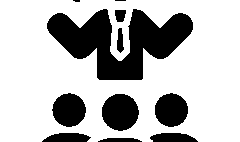WordPress User Management: The Ultimate Expert Guide to Roles & Permissions
WordPress User Management: The Ultimate Expert Guide to Roles & Permissions
Managing users in WordPress might seem simple at first glance. But if you’re running a team site, a membership blog, an eCommerce store, or a client portal you’ll soon realize that WordPress user management is actually a powerhouse of features… if you know how to use it right.
In this guide brought to you by Digital Janit, we’ll walk you through everything from built-in roles to advanced permissions, how to manage users, boost security, and avoid common pitfalls.
Introduction
Let’s be honest—if you hand over admin access to everyone, you’re basically giving away the keys to your digital kingdom. WordPress comes with a robust user system, and mastering it helps you control who does what on your site without chaos.
So, how do you make sure your contributors don’t mess with your plugins and your editors don’t touch your theme? Simple: use roles and permissions wisely.
What Is User Management in WordPress?
Why It Matters
User management is the process of handling who can access your website, what they can do, and how they interact with your content and backend settings. It’s the secret sauce behind smooth collaboration and secure content management.
Common Use Cases
- Running a multi-author blog
- Managing a membership site
- Giving limited dashboard access to clients
- Running online courses
- Operating a WooCommerce store
Understanding WordPress User Roles
WordPress has six default user roles. Each one comes with its own set of permissions—called capabilities.
Administrator
The boss. Full access to everything—posts, plugins, themes, users, settings, you name it.
Editor
Manages all content—including posts, pages, comments, and even other people’s drafts. Great for content leads.
Author
Can publish and manage only their own posts. No access to pages or plugins.
Contributor
Can write and submit posts for review, but can’t publish them. Good for guest authors.
Subscriber
Can only manage their profile and comment. Ideal for basic user registration
How to Add and Manage Users
Adding New Users via Dashboard
- Go to Users > Add New
- Fill in the info (email, username, role)
- Click Add New User
Done!
Editing Existing Users
Go to Users > All Users, click on a username, and you can edit the bio, change the role, or reset the password.
Removing or Deleting Users
When deleting, WordPress will ask if you want to delete or attribute their content. Choose wisely.
Permissions and Capabilities in WordPress
What Are Capabilities?
Capabilities are the individual actions users can take, like edit_posts, delete_pages,and install_plugins.
How Roles Define Capabilities
Each role comes with pre-defined capabilities. Admins have all, contributors have few.
Customizing Permissions
You can customize who can do what using plugins like User Role Editor or by adding code via functions.php.
Custom User Roles: When and How
Using Plugins Like User Role Editor
This plugin lets you:
- Create new roles
- Clone existing ones
- Add/remove specific capabilities
All without coding.
Creating Roles with Code
Use add_role() in your theme or plugin files. It’s powerful but not for the faint-hearted.
Managing Large User Bases Efficiently
Bulk User Actions
Select multiple users and perform actions like role changes or deletions in one go.
Using Filters and Search
Use search or role filters in the dashboard to find users fast.
Importing and Exporting Users
Need to migrate or bulk upload users? Use plugins like Import Export WordPress Users.
Front-End User Registration
Enabling Registration
Go to Settings > General and check “Anyone can register.” Choose the default role (usually Subscriber).
Creating Custom Registration Forms
Use WPForms, User Registration, or ProfilePress to design custom forms with branding and extra fields.
Plugins for Front-End Management
Want users to manage profiles without seeing the backend? Try WP User Manager or Ultimate Member.
Securing Your User Management System
Strong Password Policies
Force strong passwords using plugins like Password Policy Manager.
Two-Factor Authentication
2FA = better security. Use plugins like WP 2FA or Google Authenticator.
Role-Based Access Controls
Limit access to sensitive areas based on user roles. It’s the digital version of VIP pass access.
Monitoring and Logging User Activity
Why User Logs Are Important
You’ll want to know who edited what, installed which plugin, or deleted that page. Especially if you work with a team.
Best Plugins for Tracking User Activity
- Simple History
- Activity Log
- WP Security Audit Log
These show everything from login attempts to post edits.
Managing WordPress Multisite Users
User Roles in Multisite Networks
Each site in a multisite has its own set of user roles. One user can have different roles on different sites.
Assigning Roles Across Sites
Network admins can assign users across sites using Network Admin > Sites > Users.
Best Plugins for User Management
User Role Editor
The most popular plugin for customizing roles and permissions.
Members by MemberPress
Lets you manage access to content with easy-to-use tools and shortcodes.
WP User Manager
Great for front-end user registration, profile editing, and member directories.
Common Mistakes to Avoid
Giving Too Much Access
Don’t make everyone an admin. Seriously.
Not Monitoring User Actions
If you’re not tracking changes, things can go wrong without a trace.
Skipping Backups Before Role Changes
Always back up before making mass edits to users or roles.
Best Practices for WordPress User Management
Use the Principle of Least Privilege
Only give users the access they absolutely need. Nothing more.
Regularly Audit User Roles
Check user roles monthly—especially after bringing in freelancers or editors.
Keep Things Clean and Organized
Delete unused accounts, label roles clearly, and document who does what.
Conclusion
User management in WordPress isn’t just about adding names and passwords—it’s about control, security, and workflow. When done right, you empower your team while keeping your site safe and efficient.
Whether you’re running a solo blog or managing a network of contributors, mastering roles and permissions is a game-changer. Now that you’ve got the knowledge, go put it to use like a pro.











